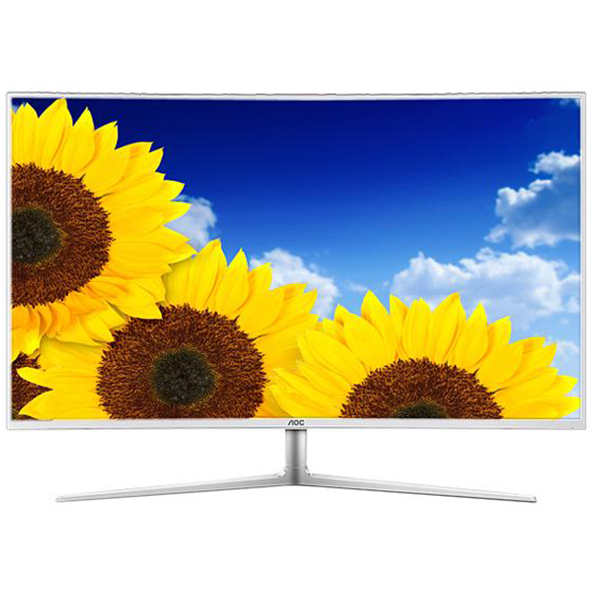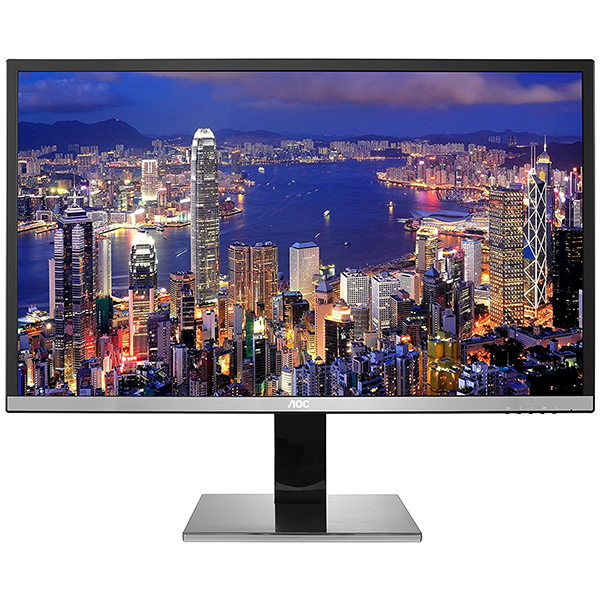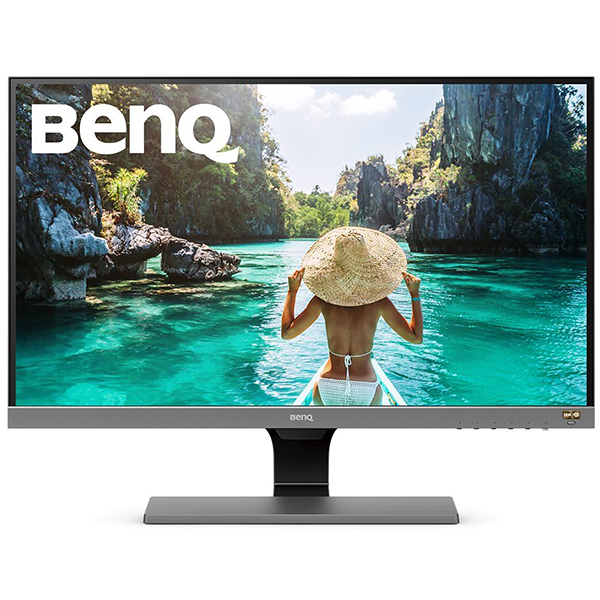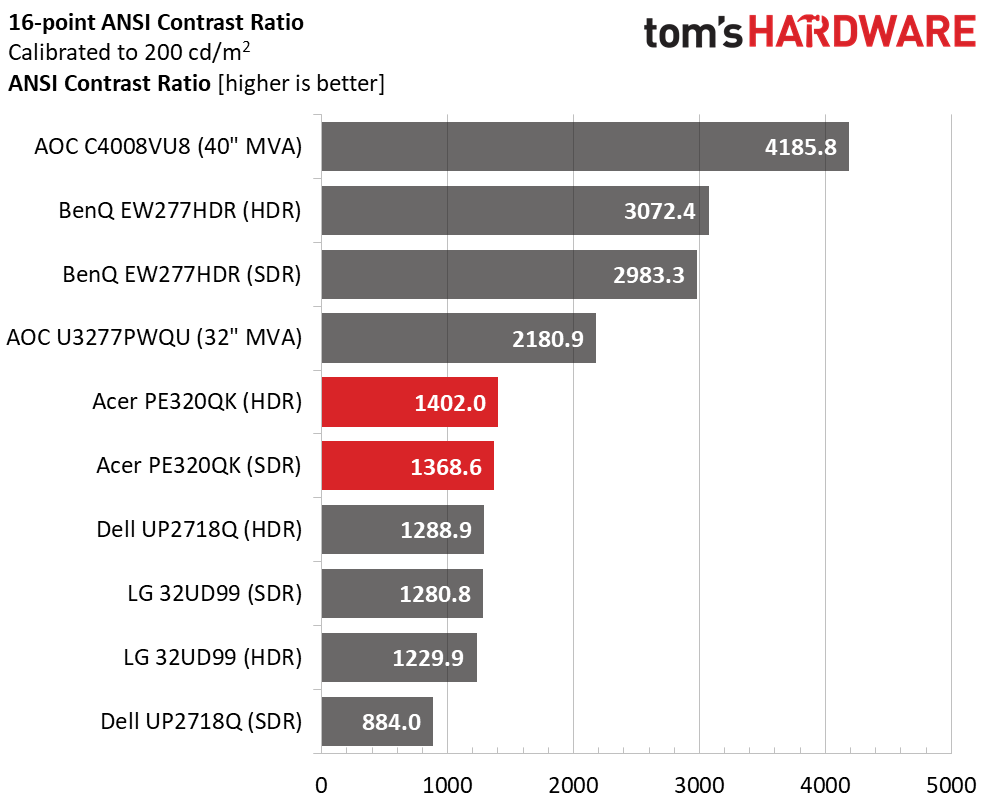Acer PE320QK 32" Ultra HD HDR Monitor Review: A Strong FreeSync Value
Why you can trust Tom's Hardware
Brightness & Contrast
To read about our monitor tests in-depth, please check out Display Testing Explained: How We Test Monitors and TVs. Brightness and Contrast testing is covered on page two.
Uncalibrated – Maximum Backlight Level
We found enough DCI-P3-capable monitors in our review database to make that the theme for today’s comparison group. Some of the screens also support HDR10. Those are Dell’s UP2718Q, LG’s 32UD99, and BenQ’s EW277HDR. The remaining monitors only feature extended color gamuts, AOC’s U3277PWQU and the 40” C4008VU8.
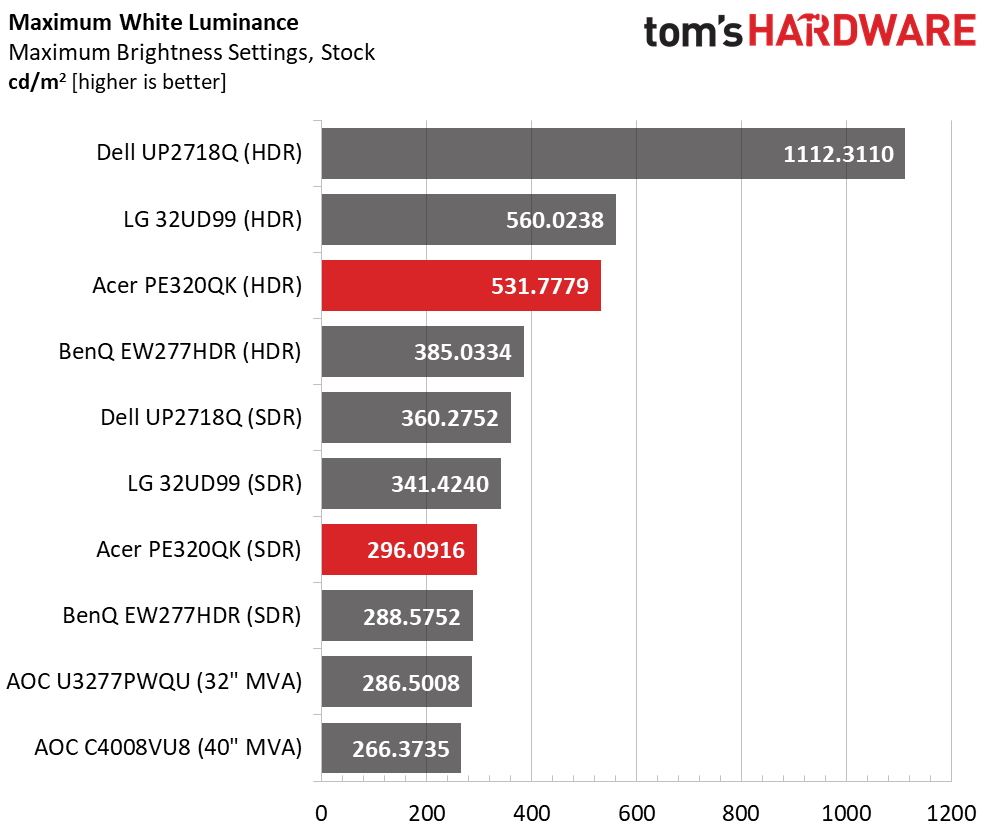
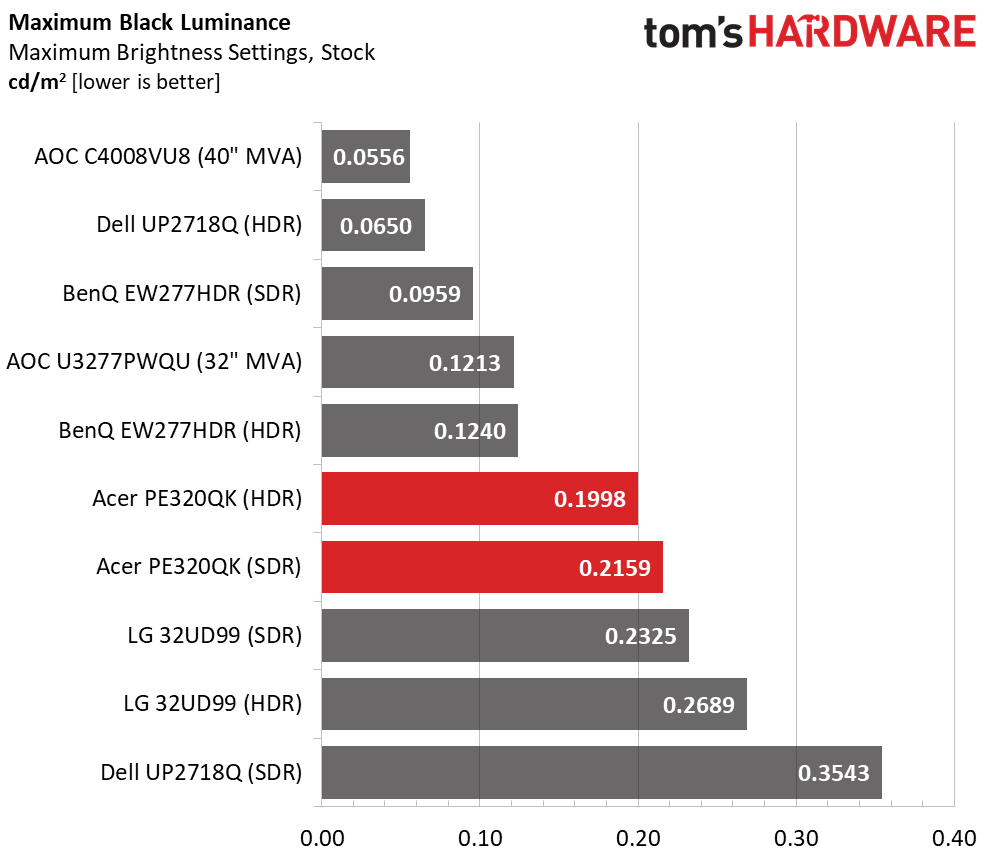
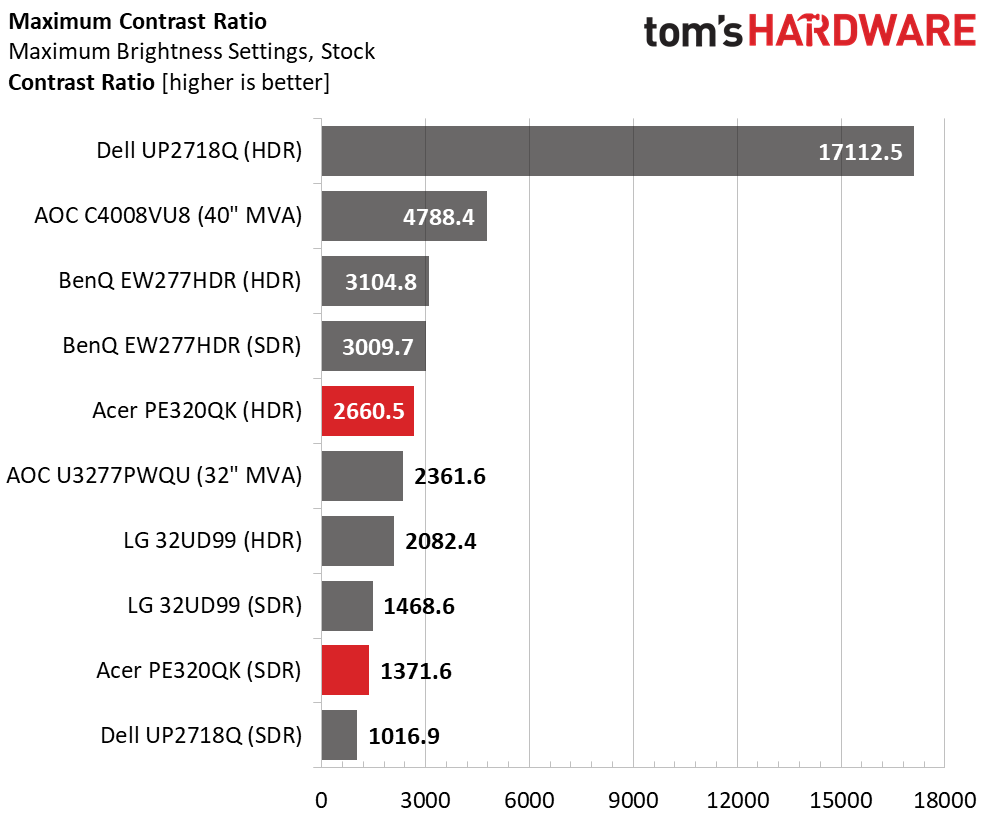
Brightness and contrast is what HDR is all about, and these screens provide it in varying degrees. The PE320QK has an edge-array backlight and can top 530 nits in HDR mode when measuring a full field pattern. Interestingly, the UP2718Q only displays 1100 nits when rendering a 10% window pattern. This is a function of its 384-zone backlight, which affords much higher contrast than the edge-lit models. They must rely on software to increase dynamic range. The Acer manages excellent numbers in SDR mode, over 1300:1, and almost double that with HDR10 signals. Then, it just manages to squeak past the VA panels. Our benchmark is still Dell’s superb monitor, which rocks over 17,000:1 contrast in HDR mode. Another impressive stat here is the C4008VU8’s black level. It takes top honors thanks to VA technology.
Uncalibrated – Minimum Backlight Level
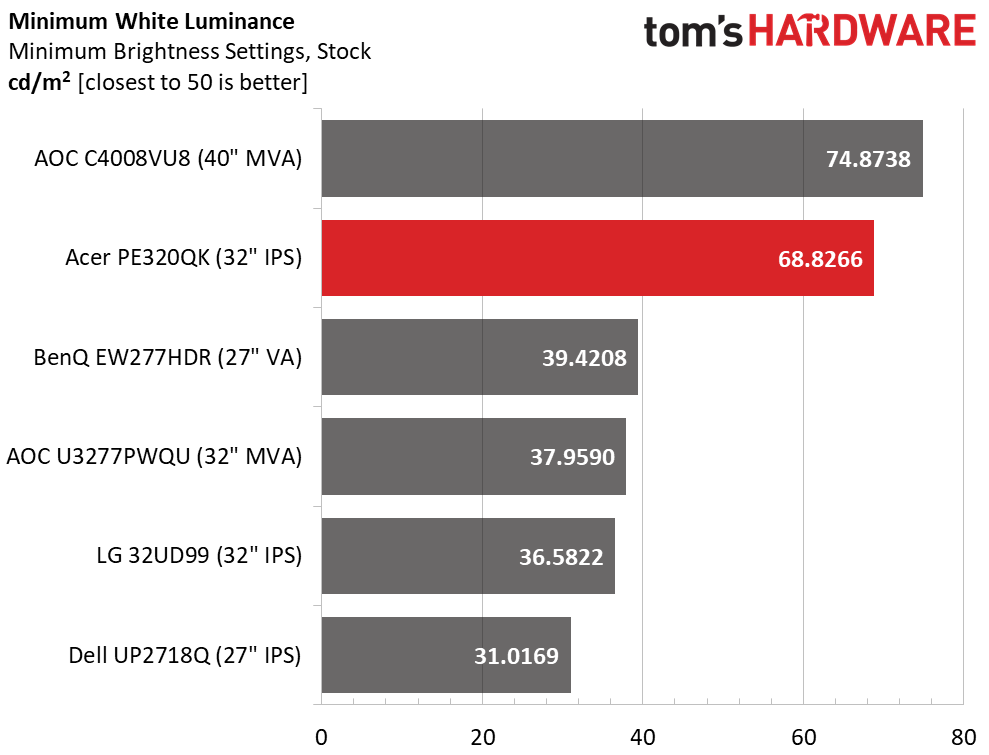
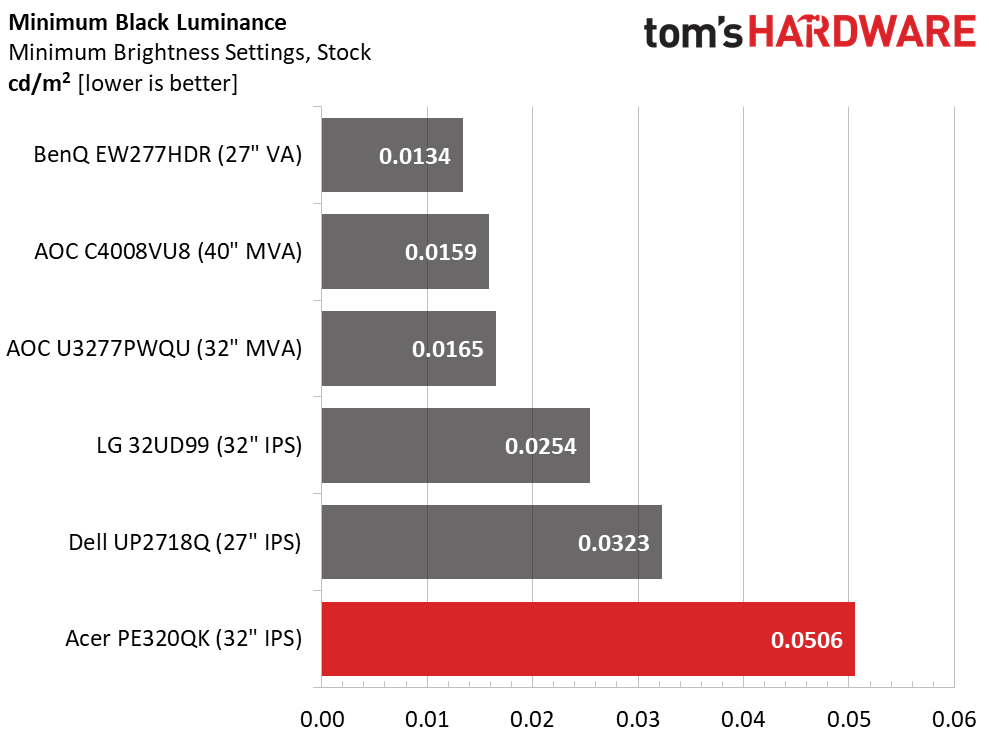
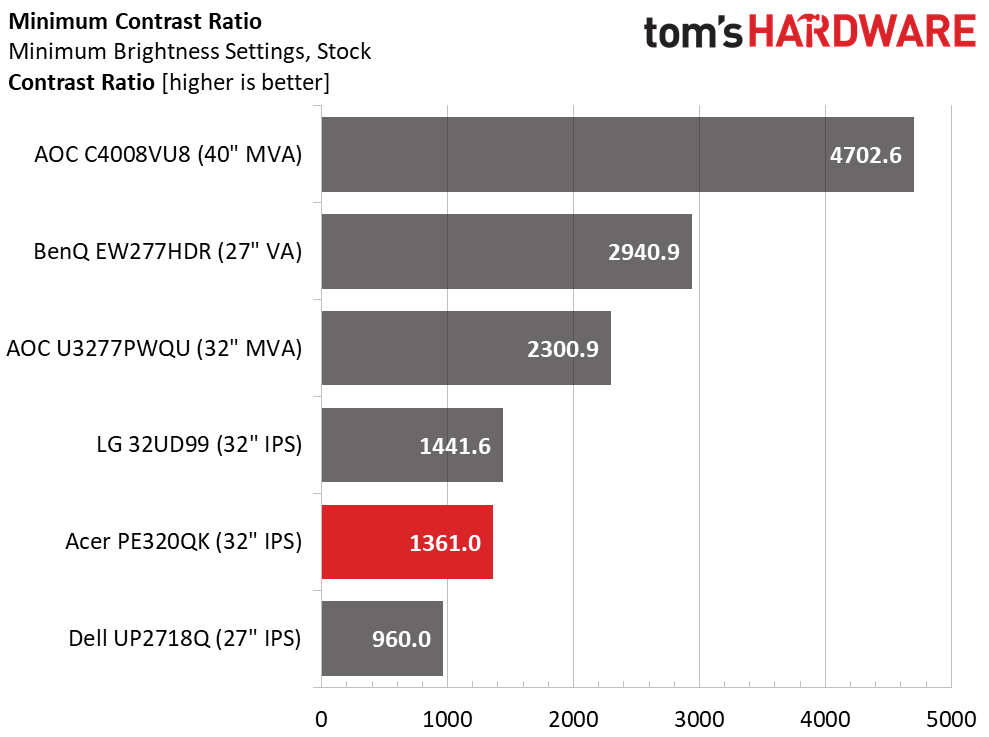
We like to see monitors throttle down to around 50cd/m2 at minimum; the PE320QK is slightly above that level at 68.8266cd/m2. This is a tad bright for completely darkened work environments, but still tolerable. With the hood in place, it’s even easier to see a quality image when the lights are low. Contrast remains consistent throughout the backlight’s range of operation.
After Calibration to 200cd/m2
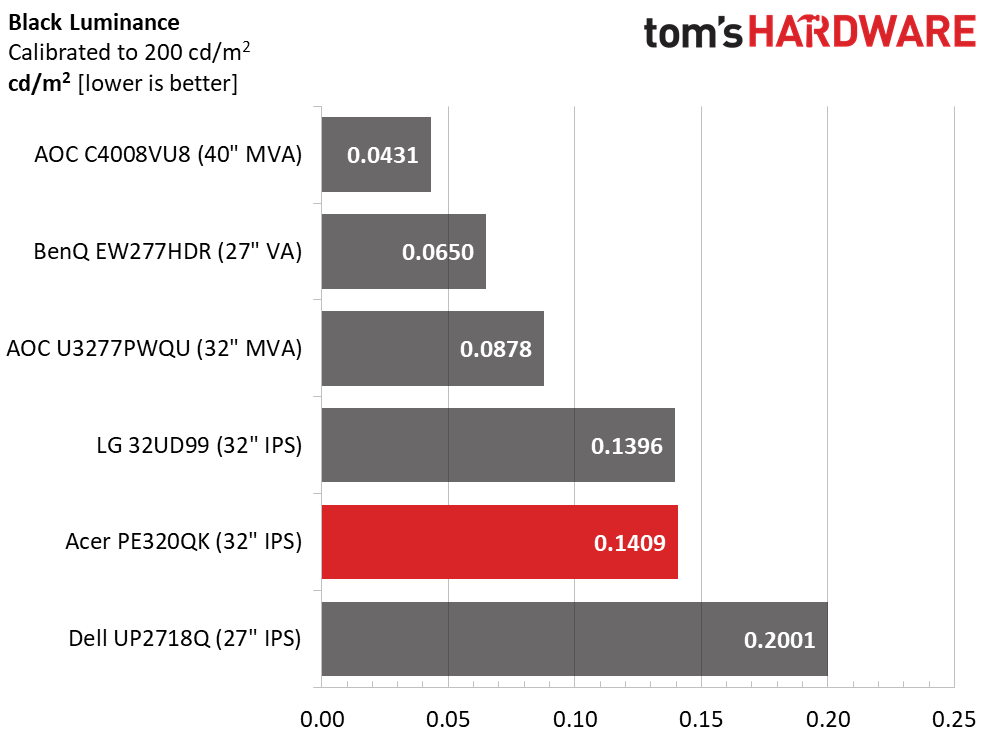
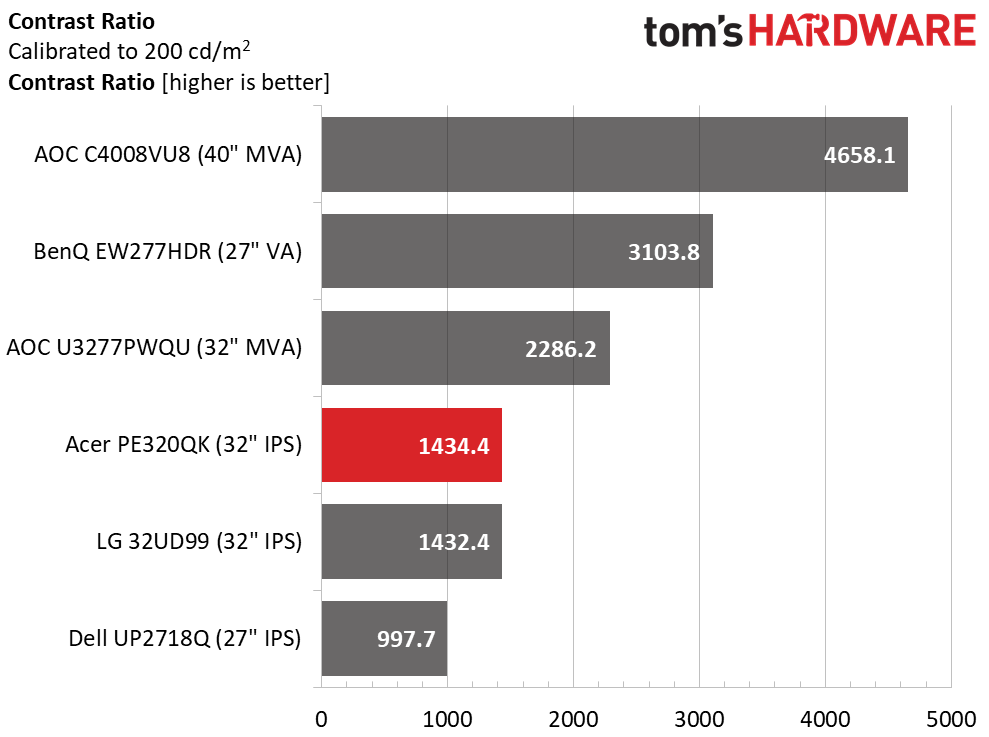
The PE320QK is one of the rare monitors that boasts higher contrast when calibrated. At 1434.4:1, it just edges out the impressive LG32UD99 we recently reviewed. This is excellent performance for an IPS panel but still pales in comparison with the average VA part. We look forward to the day when VA becomes a more prominent standard on the desktop. Coupling 3000:1 native contrast with a full-array backlight and HDR would be a dream come true. The tech is already there in consumer televisions. It just needs to come down to computer monitor sizes.
ANSI Contrast Ratio
Measuring intra-image contrast in HDR mode is still a bit difficult. The numbers do not fully reflect the difference in dynamic range when measuring a checkerboard pattern. We’re still glad to see consistency between the sequential and ANSI tests, though. The PE320QK is a high-quality display with excellent engineering and quality control behind it. We feel it’s well worth the premium price tag.
MORE: Best Gaming Monitors
Get Tom's Hardware's best news and in-depth reviews, straight to your inbox.
MORE: Best Professional Monitors
MORE: How We Test Monitors
MORE: How To Choose A Monitor
MORE: All Monitor Content
Current page: Brightness & Contrast
Prev Page OSD Setup & Calibration Next Page Grayscale, Gamma & Color
Christian Eberle is a Contributing Editor for Tom's Hardware US. He's a veteran reviewer of A/V equipment, specializing in monitors. Christian began his obsession with tech when he built his first PC in 1991, a 286 running DOS 3.0 at a blazing 12MHz. In 2006, he undertook training from the Imaging Science Foundation in video calibration and testing and thus started a passion for precise imaging that persists to this day. He is also a professional musician with a degree from the New England Conservatory as a classical bassoonist which he used to good effect as a performer with the West Point Army Band from 1987 to 2013. He enjoys watching movies and listening to high-end audio in his custom-built home theater and can be seen riding trails near his home on a race-ready ICE VTX recumbent trike. Christian enjoys the endless summer in Florida where he lives with his wife and Chihuahua and plays with orchestras around the state.
-
Ninjawithagun Only 60Hz? No G-Sync? No Dolby Vision (only HDR 10 Plus)? No 12-bit color? Pass.Reply -
cryoburner Reply20849446 said:Only 60Hz? No G-Sync? No Dolby Vision (only HDR 10 Plus)? No 12-bit color? Pass.
It's a 4K monitor. The last I checked, high-refresh rate 4K screens aren't really a thing yet, and if we're talking about gaming (which this screen isn't really targeted toward) even a 1080 Ti will struggle to get 60 fps at max settings in many games. As for Dolby Vision and G-Sync, they are proprietary technologies that would drive up the cost of the display and be of limited use to the professional market that it's targeted toward, and the screen does support the open standard equivalent technologies to both. -
JonDol Reply20850771 said:20849446 said:Only 60Hz? No G-Sync? No Dolby Vision (only HDR 10 Plus)? No 12-bit color? Pass.
It's a 4K monitor. The last I checked, high-refresh rate 4K screens aren't really a thing yet, and if we're talking about gaming (which this screen isn't really targeted toward) even a 1080 Ti will struggle to get 60 fps at max settings in many games. As for Dolby Vision and G-Sync, they are proprietary technologies that would drive up the cost of the display and be of limited use to the professional market that it's targeted toward, and the screen does support the open standard equivalent technologies to both.
There are lots of peoples who don't care about the extra cost of those proprietary technologies but just want that such a monitor exists and that, sadly, isn't the case yet. And they care even less if a today 1080 Ti will agonize displaying those games because such a monitor is a future proof investment. Just as a reminder, the same was the case over a decade ago when the first FHD monitors came to market: the best video cards were also struggling with the max settings at that resolution...
Cheers
-
sephirotic Reply20852386 said:20850771 said:20849446 said:Only 60Hz? No G-Sync? No Dolby Vision (only HDR 10 Plus)? No 12-bit color? Pass.
It's a 4K monitor. The last I checked, high-refresh rate 4K screens aren't really a thing yet, and if we're talking about gaming (which this screen isn't really targeted toward) even a 1080 Ti will struggle to get 60 fps at max settings in many games. As for Dolby Vision and G-Sync, they are proprietary technologies that would drive up the cost of the display and be of limited use to the professional market that it's targeted toward, and the screen does support the open standard equivalent technologies to both.
There are lots of peoples who don't care about the extra cost of those proprietary technologies but just want that such a monitor exists and that, sadly, isn't the case yet. And they care even less if a today 1080 Ti will agonize displaying those games because such a monitor is a future proof investment. Just as a reminder, the same was the case over a decade ago when the first FHD monitors came to market: the best video cards were also struggling with the max settings at that resolution...
Cheers
144hz is dumb gaming gimmick.
However 60hz in this day and age is unnaceptable even for professional use. I'm tired of editing 24fps content with judderr or at lower 48hz. 75/72hz should have been the new standard for a long time now. Modern ips is perfect capable of refreshing at 12ms, even half of that full g2g without overdrive.
Monitor makers are completing neglecting their profissional and prosumer customers.
-
drajitsh I print using a photo printer. That means adobeRGB is still very very important. Also, 8 bit native means it is a enthusiast rather than pro monitor.Reply
